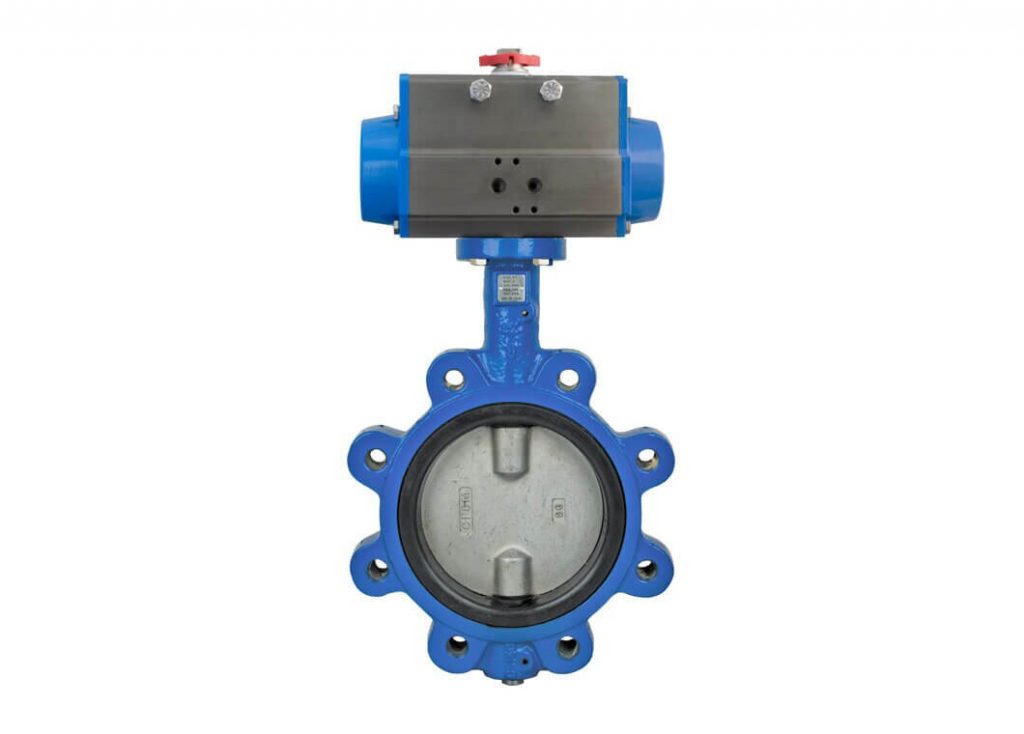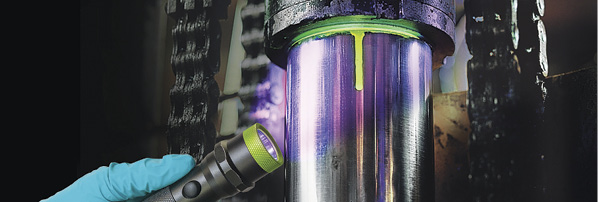Selecting Pneumatic Valves
By Gilbert Welsford Jr., Founder of ValveMan.com
 Pneumatic valves are one of the most popular varieties of actuated valves. The devices are clean, efficient, and have an excellent force-to-size ratio. They are used in various fluid control applications across numerous industries. Pneumatic valves have several benefits in fluid control. However, there are of multiple types with unique characteristics and advantages, so you need to select the right one for your application. Correctly choosing the suitable pneumatic valve for an application requires a good understanding of what the devices are.
Pneumatic valves are one of the most popular varieties of actuated valves. The devices are clean, efficient, and have an excellent force-to-size ratio. They are used in various fluid control applications across numerous industries. Pneumatic valves have several benefits in fluid control. However, there are of multiple types with unique characteristics and advantages, so you need to select the right one for your application. Correctly choosing the suitable pneumatic valve for an application requires a good understanding of what the devices are.
Valves are fluid control devices that control and modulate the flow of media in a piping system. They employ various types of blocking mechanisms that physically obstruct or allow the flow of media. Valves may be manually controlled or actuated. Also known as automated valves, actuated valves are assembled with actuators that operate without human intervention. Depending on how it generates the required force, an actuator can be electrical, pneumatic, or hydraulic. Valves coupled with actuators are commonly viewed as a single unit and named accordingly. For example, a butterfly valve that is coupled with a pneumatic actuator is referred to as a pneumatic butterfly valve.
 Pneumatic valves are of various builds and configurations. Therefore, certain factors must be carefully considered in order to select the right one for your application. The following are some of these factors.
Pneumatic valves are of various builds and configurations. Therefore, certain factors must be carefully considered in order to select the right one for your application. The following are some of these factors.
Media
The first consideration in selecting the best pneumatic valve for your application is to consider the type of fluid that will flow through it. The fluid could be liquid, gaseous, or sludge, among others. Also, it is vital to consider the flow pressure. The media could be compressed air, water, or have a flow with negative pressure. This consideration has to be made to ensure that the compatible valve is selected for the application.
Actuation type
Pneumatic actuators may be double-acting or single-acting. Commonly referred to as spring return actuators, single-acting actuators have a compressed spring located on one side of the piston. The spring holds the valve in its original position. To operate the valve, compressed air introduced on the opposite side of the piston surmounts the spring’s force. Once the air supply is shut off, the spring returns the valve to its original position.
In double-acting actuators, however, pressurized air at different pressures is supplied to the piston from both sides. The pressure difference between the two sides keeps the valve in the required position – open, closed, or partially open and closed.
Single-acting pneumatic valves are suitable for open and close control, but for a more controlled modulation, their double-acting counterparts are more common. However, when accompanied by a positioner, single-acting spring return actuators on v-ball control valves can implement modulating control. Other considerations when selecting between a single- or double-acting actuator include weight, size, and cost.
Valve materials
Valve materials are of high importance in selecting the right valve for your application. The right materials reduce the risk of failure during operation. For example, using uncoated valve materials in a chemically aggressive environment leads to rust and failure of parts. Epoxy-coated actuators are resistant to most chemicals, but they are not suitable for conditions in which they are fully submerged by the media. For this sort of application, stainless steel is a better option. Brass valves are perfectly adequate if the media is water. Another option is to use high-temp seal kits that enable you to tailor a certain valve’s suitability for a particular application. However, keep in mind that choosing the correct valve material is still the most important part of the process.
Flow capacity
Essentially, a valve, once it’s opened, has to deliver enough flow to fill up a specific volume downstream within a given period. An undersized valve delivers less flow, increasing the time needed to fill up downstream. An oversized valve is simply an extra cost in the system. Therefore, it is essential to determine the maximum flow volume expected during operation and select a suitable valve with adequate capacity. Knowing the right valve capacity is easy, as many manufacturers provide the flow capacity of their valves and reference materials.
Operating environment
Pneumatic valves are affected by their operating environment. Environmental factors include ambient temperature, exposure to chemicals, vibrations, and so forth. Valve components, especially the pneumatic cylinder, have their fundamental operating temperature and must be considered before introduction into any working environment. A dry, nonaggressive environment does not require specially coated valves. A humid environment does require coating on the external components of the valve. Another operating environment that affects the choice of valve is the medical or food industry. Such environments may require a valve of certain certification or “clean” design features.
Valve type
Different pneumatic valves are best suited for different applications and operating conditions. For example, a butterfly valve is a poor choice for high-pressure applications and has a higher head loss. On the other hand, ball valves are more suitable for high-pressure applications due to the nature of the ball; they also have lower head loss. Actuating a ball valve in a high-pressure flow system is easier compared to actuating a butterfly valve. However, butterfly valves are popular in huge diameter lines for isolation. Always select the best valve build for your application.
Installation area
Pneumatic valves are air-actuated valves. The air usually comes from an air compressor strategically positioned in the work environment. It is therefore vital to ensure that the application environment is adequately inspected for space that should be adequate to accommodate the right-size compressor. The compressor determines the pressure at which the actuating mechanism receives air. The available air for actuation thus influences the size of the actuator required to deliver the required force to actuate a valve.
Installation orientation
For most valves, the direction of flow is horizontal, and since the actuator is installed on top of the valve, its installation orientation will be vertical, that is, upright. As much as possible, avoid horizontal actuator installation. This is because the pressure is exerted on one side of the packing, which will experience wear, leading to leaks in the valve.
Pneumatic valves are fast, reliable, and efficient devices for fluid control. Selecting the right type for an application is vital to the application’s success. Careful consideration of the factors discussed above will ensure that you select the best pneumatic valve for your application.







